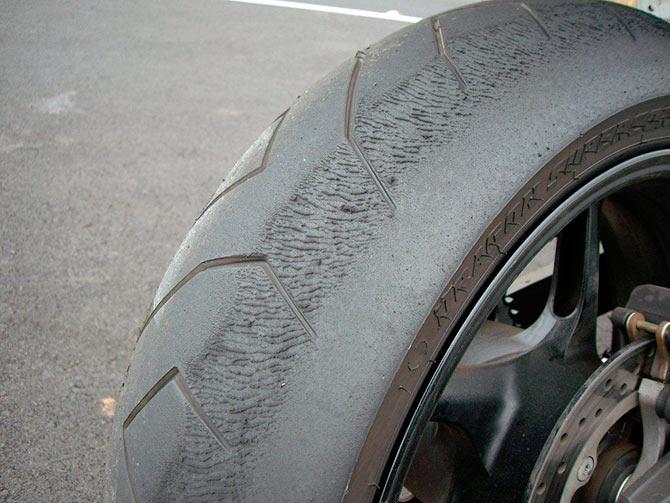
Worn tires can significantly harm a vehicle’s performance as well as pose a danger to the driver and others on the road. This is especially true with motorcycles, since you’ll lack the protection of an enclosed vehicle if a failing tire causes an accident. While it’s obvious that you’ll need an immediate tire replacement in the case of a puncture, there are plenty of other reasons you may need to replace a tire. Replacing tires regularly may seem like a pricey investment, but it’s cheaper than seeking the services of Vancouver accident lawyers if your lack of maintenance leads to injury, property damage, or worse.
Get the right tires
The best step you can take as far as preventative maintenance is making sure you have the right tires for your bike. It’s always wise to invest in high quality tires, such as motorcycle tires made by Shinko. Obviously, tire size is important, but there are additional factors to consider. If you have a stock bike, you should be able to check your owner’s manual for your proper tire fitting. Otherwise, you’ll have to know the exact dimensions of your bike or seek assistance in the shop.
Once you know the metric tire size to look for, you’ll also need to find the right load and speed ratings for your bike and riding style. The load rating will tell you how many pounds the tires can safely carry while the speed rating determines the speed the tires can reliably take without increased wear. These two ratings are often overlooked by riders when buying tires, and this can have dangerous consequences. Putting tires through more than they can reliably handle leads to increased and sometimes uneven wear, which greatly increases the likelihood of failure.
Regulate tire pressure
When you have the right tires installed on your bike, regulating your tire pressure becomes your most important responsibility. Generally, the side of the tire itself will list the recommended tire pressure, but it can be adjusted to meet specific needs. For example, when riding in the cold, it’s usually better to have slightly lower tire pressure than the hotter months because the speed of rotation will cause the air inside to heat up and expand. If tires are overinflated in the cold, this expansion can cause tires to rupture. Pressure may also be adjusted depending on the load carried and the type of surface the motorcycle is riding on, but it’s never advisable to go above or below the recommended safety levels.
Tire inspections
Even with the right tires and frequent monitoring of air pressure, you’ll still need to thoroughly check the condition of your tires on a regular basis. On average, most riders say that a front tire should be good for approximately 3,700 miles and a rear tire should be good for 1,800. Typically, the rear tire has the bulk forces of acceleration and deceleration applied to it, so you can expect this one to wear out much faster.
Beyond looking for obvious damage like punctures or deformations when inspecting the tires, you’ll also want to check the tire tread for any noticeable wear or unusual patterns. Localized wear patterns can often be a sign of other issues with the bike. For instance, treads unusually worn on the outsides can indicate a problem with shock absorption or balance issues. You’ll also want to make sure that you don’t exceed the legal tread wear limit. Most tires feature a wear indicator in the form of bumps at the bottom of the tread once the rubber is worn to an unsafe level. Weather conditions and other uncontrollable factors can have a significant impact on how soon this limit is reached.
Your motorcycle’s tires may not press on your mind as much as the mechanical aspects of your bike, but they are just as important. Proper tire maintenance will play a crucial role in keeping you and others safe.
